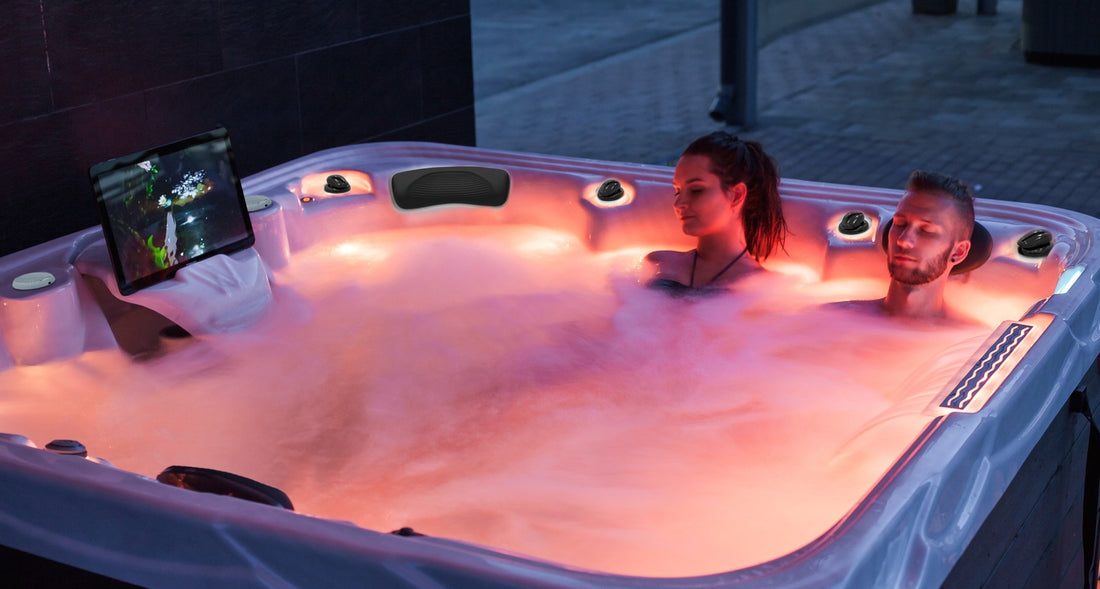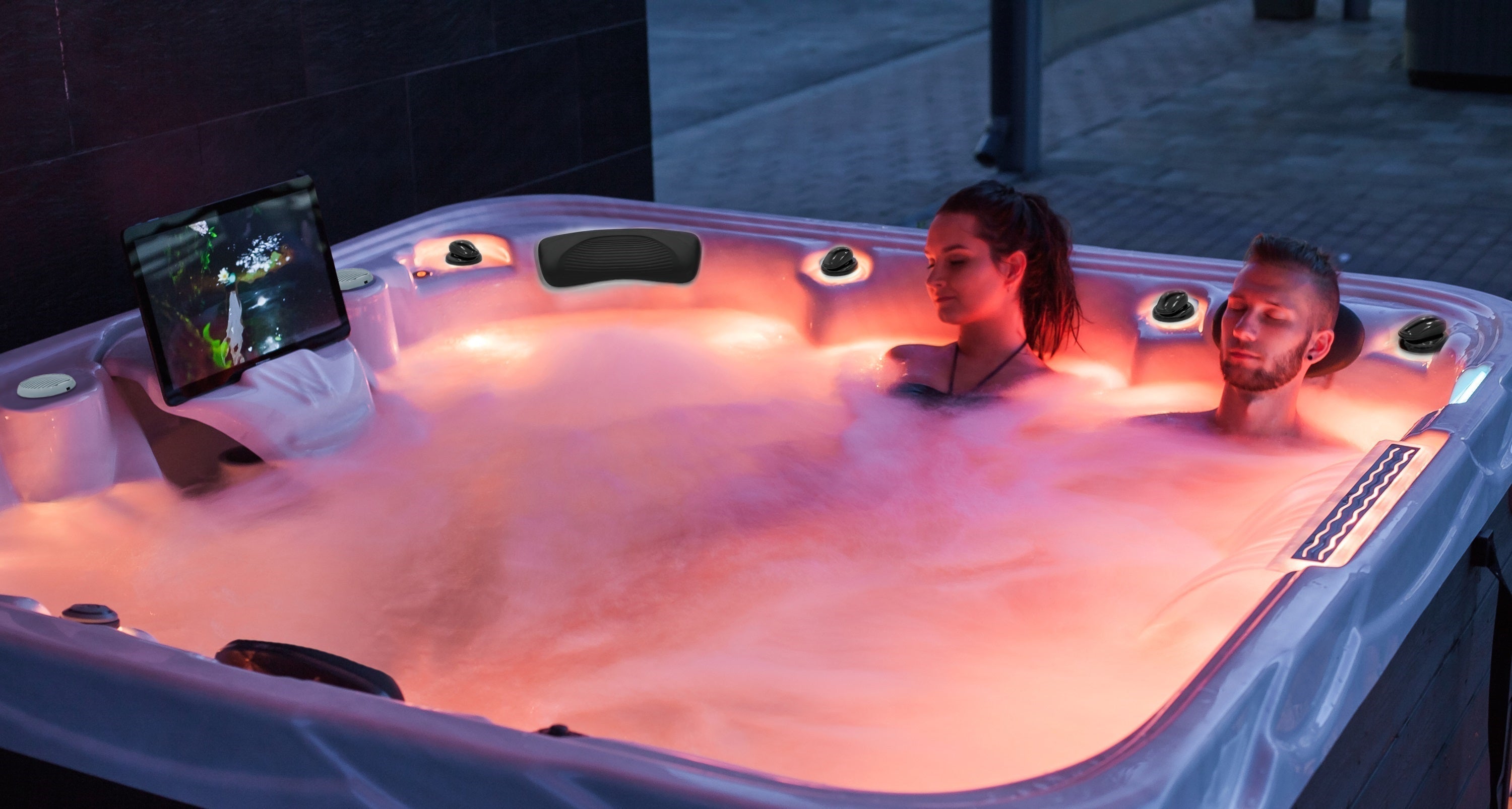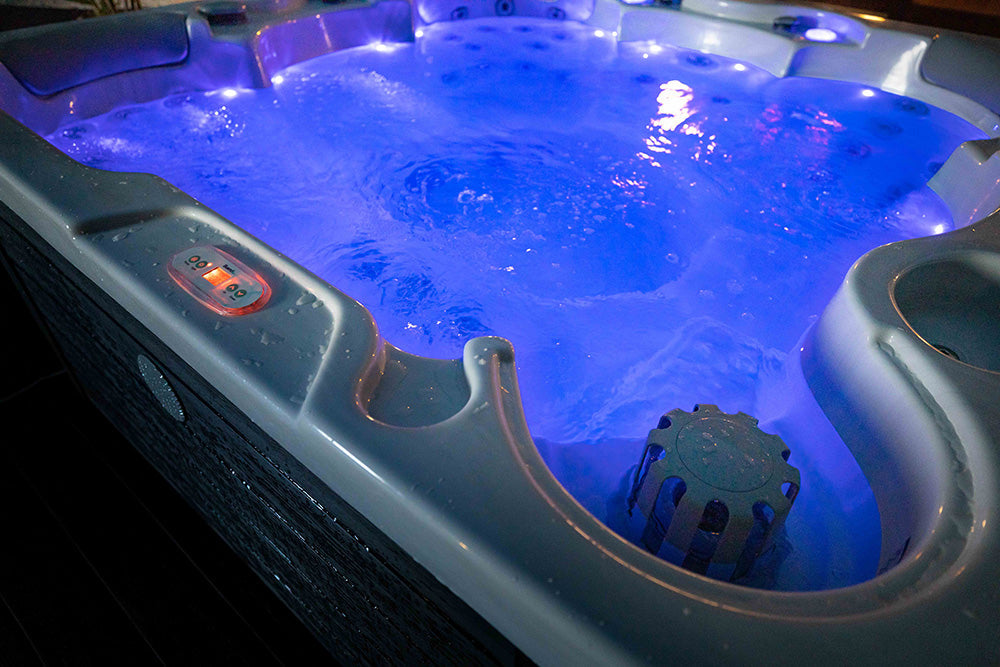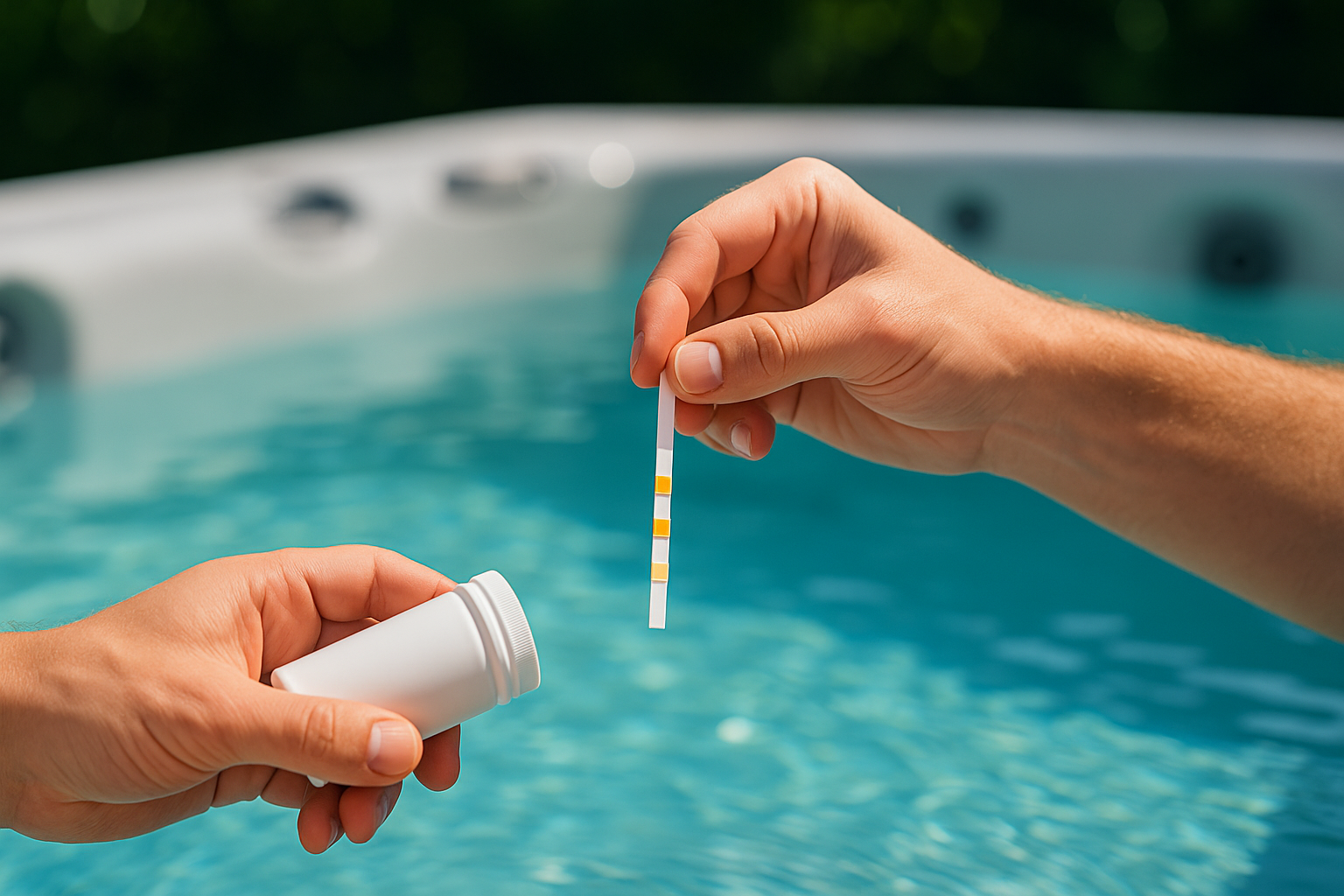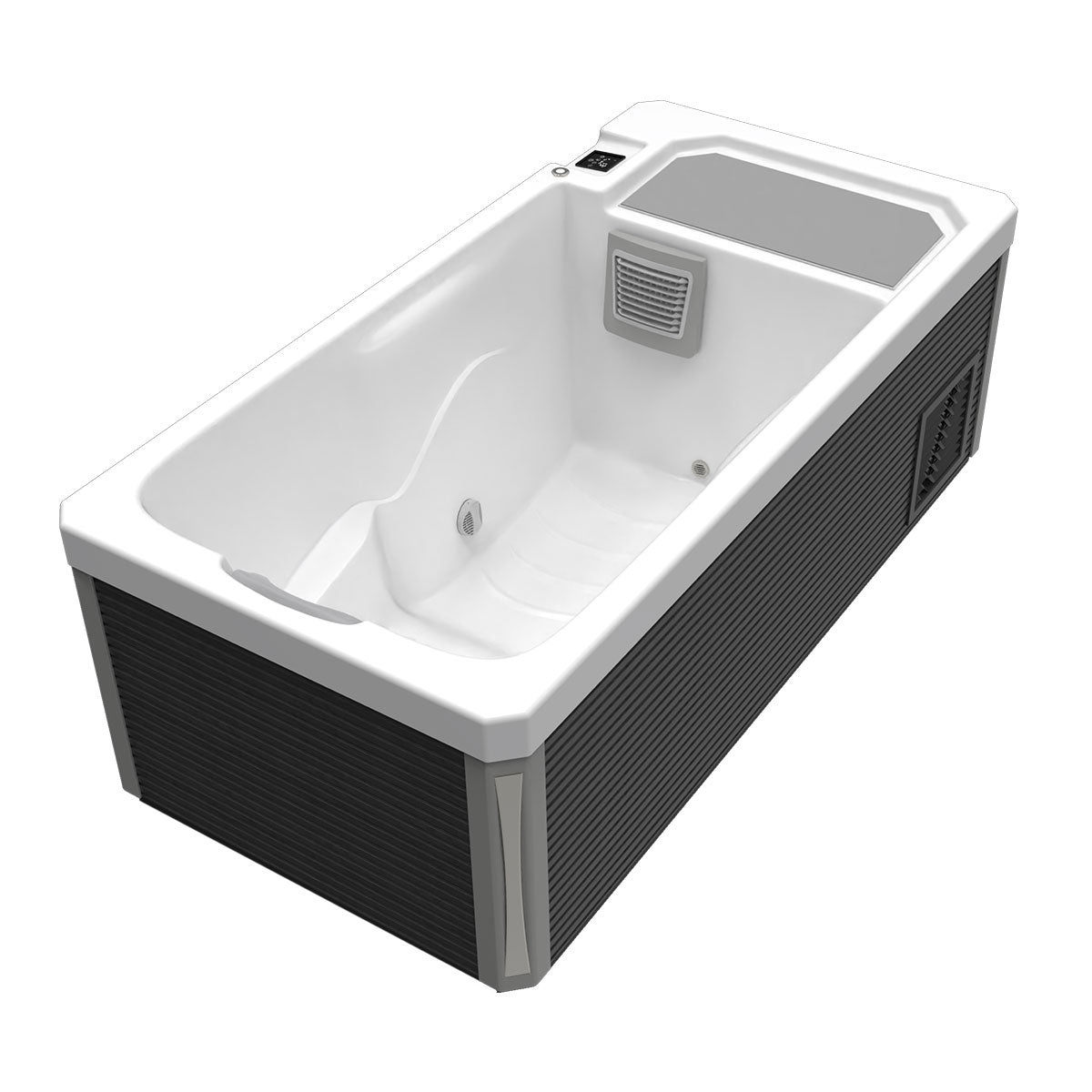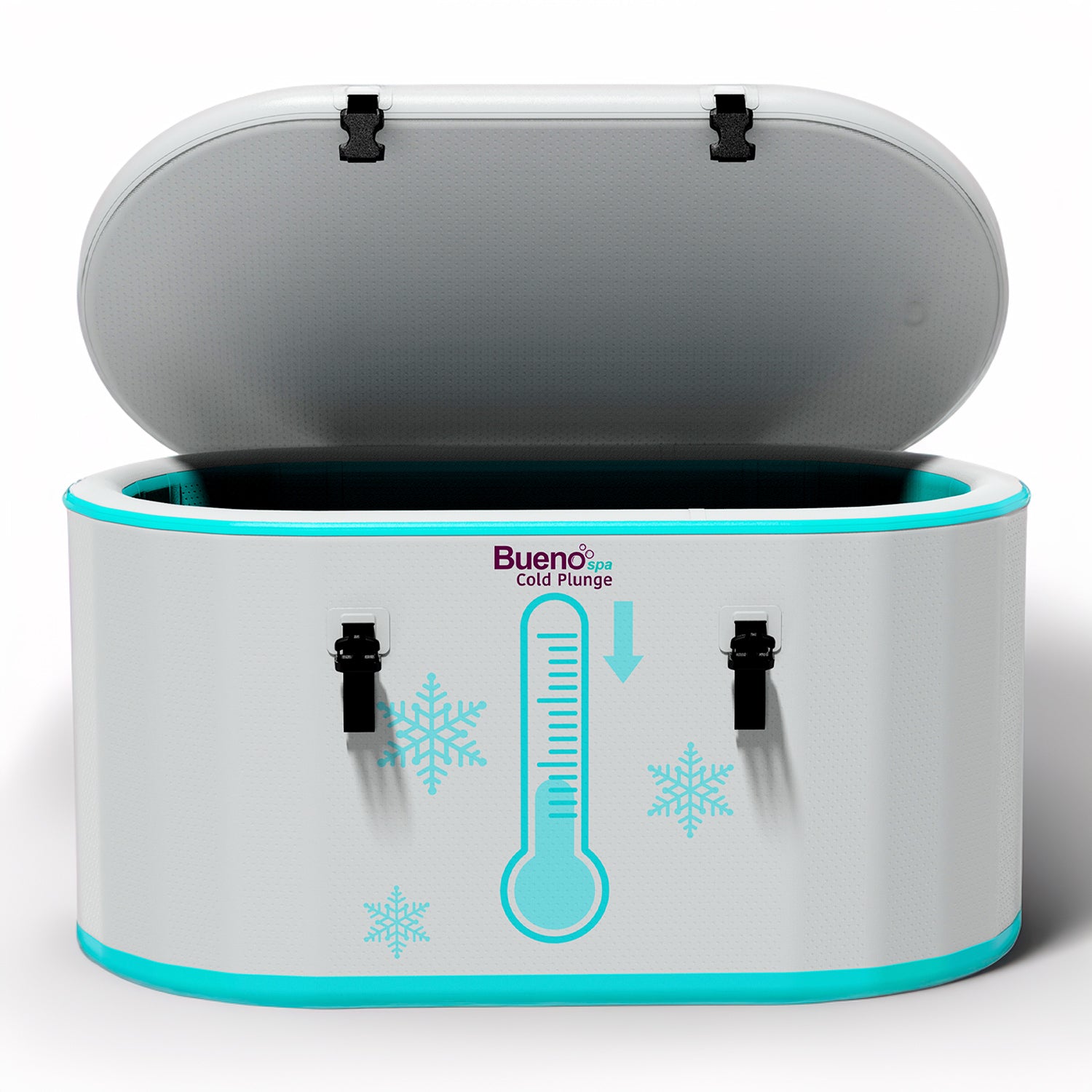Hot tub sizes range from small to large. Littler tubs take less room, and they are cheaper to buy and maintain. Bigger ones are a larger expense, but they give you more space and accommodate more people. Picking the right one is a matter of figuring out which tub gives you the value, space, and comfort you require.
This straightforward guide looks at standard hot tub size options, and how to choose one.
Why Hot Tub Size Matters
Experts always encourage buyers to choose wisely when it comes to hot tub sizes. There are three main reasons for this:
- Cost
- Space
- Utility
First, there’s the cost factor, which is the most important one for a lot of buyers. Tubs are pretty big investments, after all, and the bigger, fancier models have price tags way higher than smaller and simpler. It’s not just the purchase cost, either – you have to spend more to run and maintain a large tub also. On a tight budget? You’ll probably have to select a tub that’s on the smaller side.
But it’s not only about money. You also have to consider how much space you’ve got to work with, and how much space your tub will take up. The average hot tub size for a medium tub is around 84 inches by 84 inches, for example, but you can get bigger tubs that take up nearly twice as much room as that. If you don’t have a lot of room to work with, a larger tub might dominate the space or may not even fit at all.
Lastly, hot tub dimensions affect a tub’s utility. Bigger tubs give you more room to stretch out and share the space with others. Indeed, the largest hot tubs can handle seven or eight bathers, if not more. But you might not ever intend for that many people to use your tub. It might be just for you and your partner, in which case a smaller model should offer the ideal balance of comfort and efficiency.
Overview of Common Hot Tub Sizes
Broadly speaking, we can classify hot tubs into three distinct categories according to their sizes:
Small Hot Tubs (2-4 People)
The smallest tubs accommodate a maximum of four people, and they’re mainly aimed at couples or small families. The average dimensions of a hot tub in the small category are around 72 inches by 72 inches, though exact sizes vary from brand to brand and also depend on the shape of the tub. Tubs like these don’t take up too much room, making them a good fit for smaller spaces in or outside of the home.
Pros
- Small tubs are some of the cheapest.
- They use less energy than larger models.
- They won’t take up too much room.
- They’re easier to clean and maintain.
Cons
- They’re not as visually impressive as bigger tubs.
- They may not provide enough space for bigger families or groups.
Medium Hot Tubs (5-6 People)
These tubs are generally aimed at families or groups of friends. Perfect for small gatherings or parties, they give you that extra room to move around that’s lacking in little tubs. Of course, that means that they’ll also take up more space in your yard or home, and cost more to run. However many buyers appreciate these tubs’ distinct balance between space, functionality, and efficiency.
Pros
- A good amount of room to move around and enjoy
- The ideal balance of comfort and efficiency
- Available in various shapes and styles
Cons
- More expensive to install and maintain than small tubs
Large Hot Tubs (7+ People)
Finally, at the top end, we have the big tubs. These are mainly for big groups and can accommodate anywhere from seven individuals to much more than that. They’re amazing to look at and lots of fun to bathe in, but do have some drawbacks. You have to ensure you’ve got enough room (and budget) to handle a tub of this size before buying one.
Pros
- Tend to be the most visually impressive tubs
- Loads of room for parties and families to share the fun
- Can add lots of value to a property
- Ideal for those who entertain or host lots of gatherings
Cons
- The most expensive to install and maintain
- Too big for small yards and spaces
- More jets and components may lead to a higher risk of repair issues
How to Choose the Right Hot Tub Size
We’ve seen how important it is to consider the dimensions of a hot tub before you buy it. Next, here are some tips to find the right size:
- Measure Before You Buy: Naturally, it helps to know how much room you’ve got to work with. If you plan to install your tub in a relatively small yard or space, it’s crucial to measure it first. Then compare the measurements you get with average sizes to narrow your options.
- Consider the Capacity: Think about how many people will use your tub on a regular basis. Is it just for two or three people? Or perhaps a few more than that? Check the maximum capacities of the tubs that interest you and only focus on those that are big enough for your family.
- Think About Why You’re Buying: How do you intend to use your tub? Perhaps it’s just for personal relaxation and therapy, or maybe you hope to host regular hot tub parties. Find one that’s best suited to your primary needs so you can get the most value from it.
Installation and Placement Tips for Different Sizes
In this section, we’ll cover some useful tips for installing tubs in different areas – both indoor and outdoor – according to their size.
Indoor vs. Outdoor Installation
Many people envision installing their hot tubs outdoors, but it’s perfectly possible to set them up inside, as well. Here are some helpful tips for both scenarios:
Indoor Hot Tubs
- Ventilation: Prioritize airflow around your unit to keep the surrounding space dry and minimize the risk of moisture damage.
- Integrity: Bring in experts to check your floors and walls to make sure they’re strong enough to support the tub. The tub can weigh thousands of pounds when full, after all.
- Access: Remember that problems may arise with your tub’s electrical components or pipework. Install it in a way that provides easy access to these areas for repairs and maintenance work.
Outdoor Hot Tubs
- Base: Find a flat, strong, and stable surface to use as the base for your tub. Concrete slabs work well for this, as well as strong decks.
- Weather: Invest in other hot tub accessories or surrounding structures – such as covers or pergolas – to protect the tub in bad weather.
- Placement: Find a spot that affords privacy, while also providing easy access around the tub for maintenance purposes.
Accessibility and Safety Considerations
As touched on above, it’s important to install your tub in a way that makes it accessible and as safe as possible for the users.
- Try to leave at least one to two feet of space all around the tub so it can be repaired and maintained.
- Install non-slip steps, rails, or other safety accessories for easy entry and exit.
- Bring in professional electricians to handle the wiring connected to your tub’s installation.
- Watch out for any structures overhead – tubs should never sit below hanging branches or power lines.
Foundation and Spacing
- Finally, some helpful tips regarding the foundation that you place your tub onto:
- Concrete pads and hot tub decks are the best bases for hot tub installations.
- Don’t install a tub on soft or uneven ground.
- Steer clear of walls, fences, and other structures to avoid accidental damage.
- Leave space for your hot tub cover to open and close all the way.
Frequently Asked Questions (FAQs) About Hot Tub Sizes
What is the most common hot tub size?
Medium tubs tend to be the most popular. They fit in that “sweet spot” in terms of price, size, and functionality. They’re a good fit for a lot of homes and families.
Can I customize the size of my hot tub?
It’s certainly possible. Lots of brands offer customizable sizes, designs, and seating layouts, letting you essentially craft your ideal tub, though this can come at a higher cost. You may also have to wait longer to have a custom tub made and fitted compared to a premade one.
How much space do I need around a hot tub?
Aim for at least one to two feet of space all around the tub. This is for two reasons: maintenance and safety. You need space so any necessary repairs can be carried out, and the extra space prevents issues like overheating or moisture damage.
Do hot tub sizes affect energy consumption?
Yes, bigger tubs use more water and energy to heat up. This makes them more expensive to run, though there are many energy-efficient models available today designed to keep running costs as low as possible.


 (888) TO - BUENO
(888) TO - BUENO
